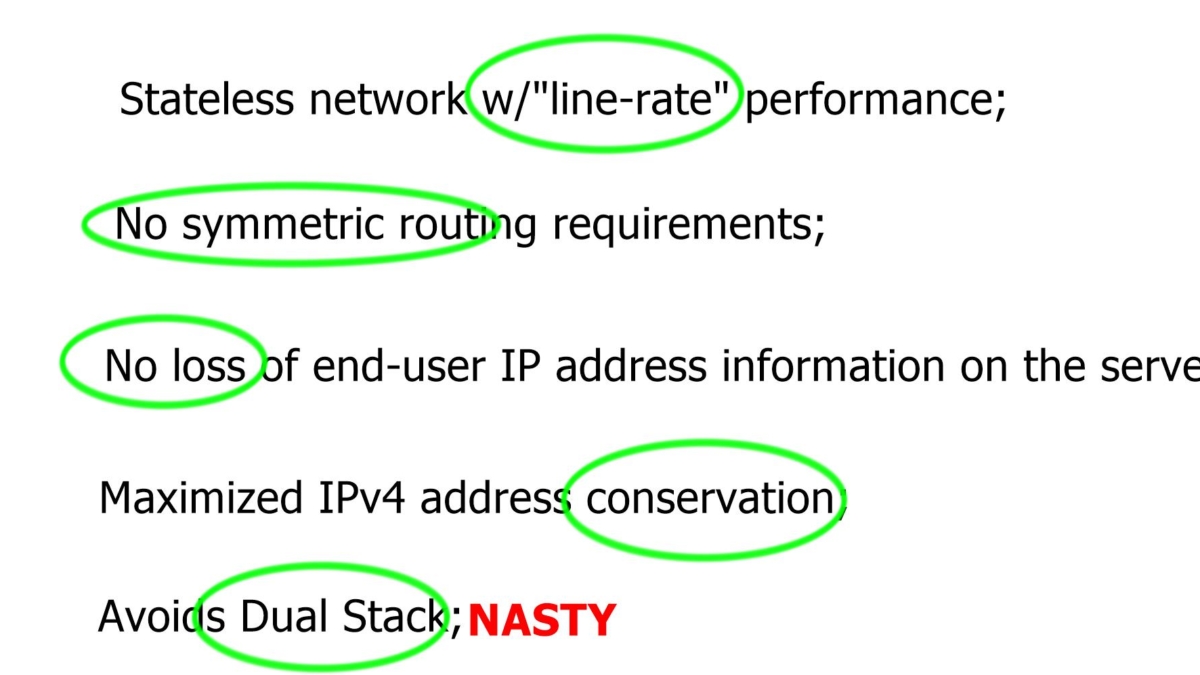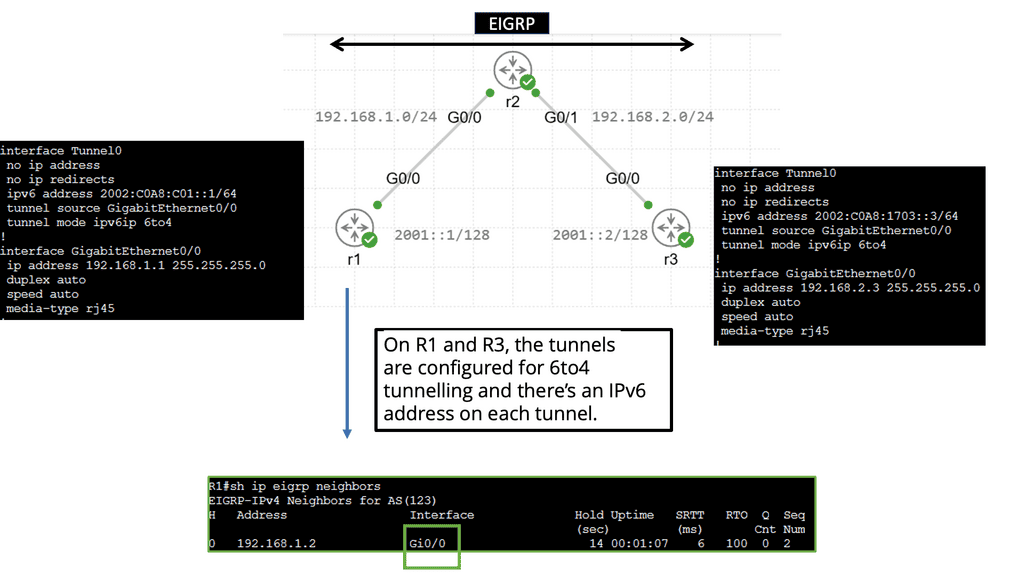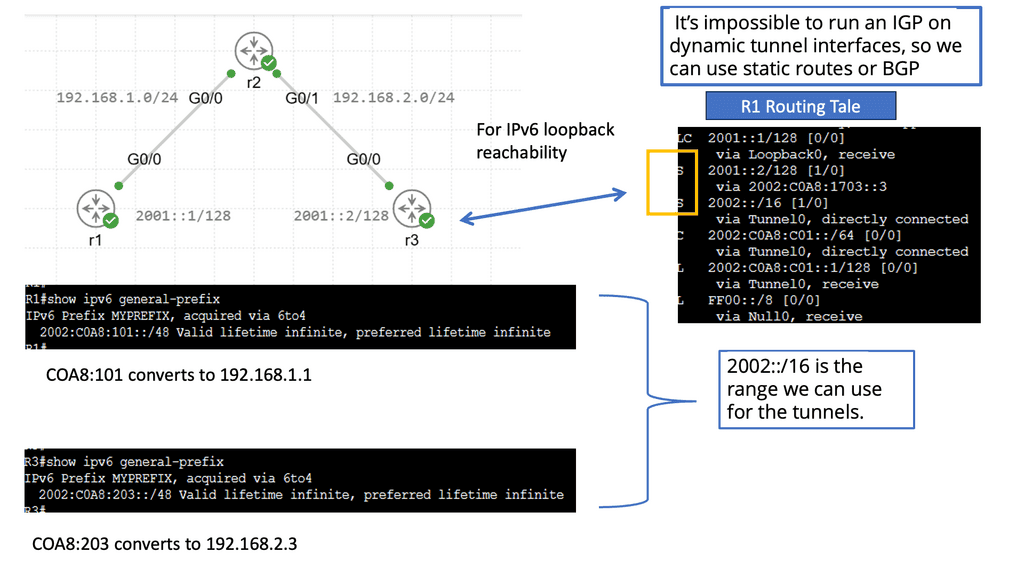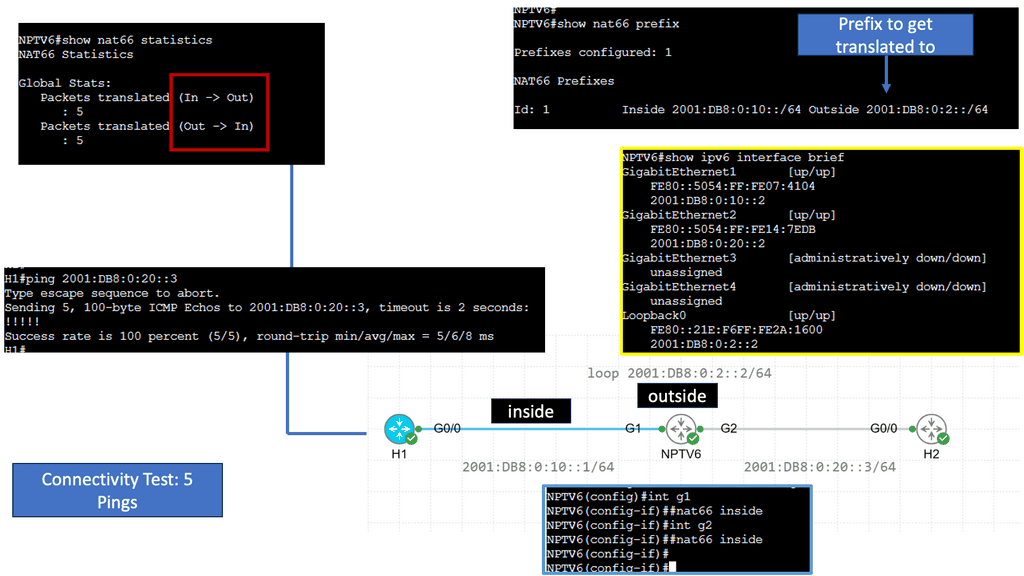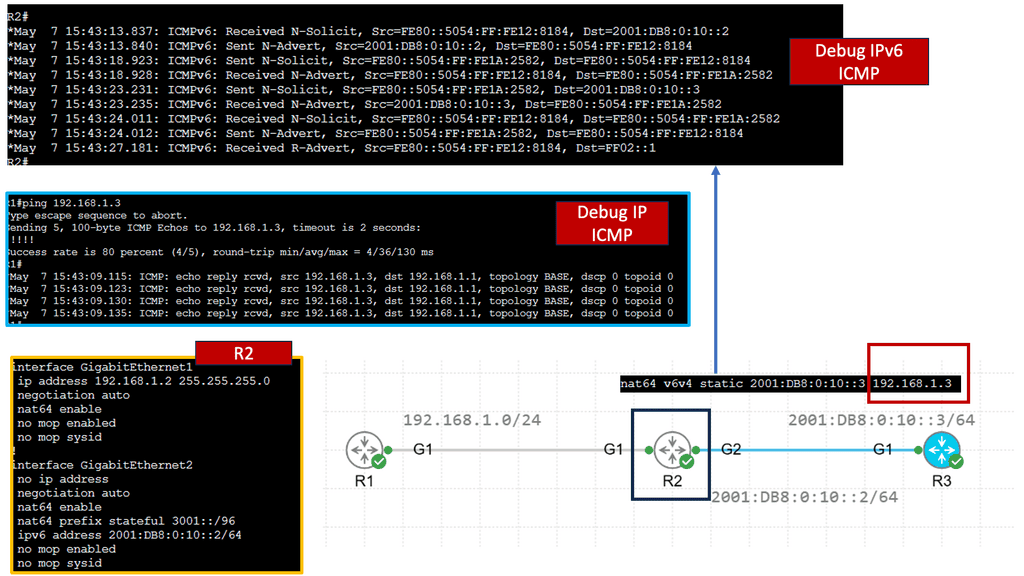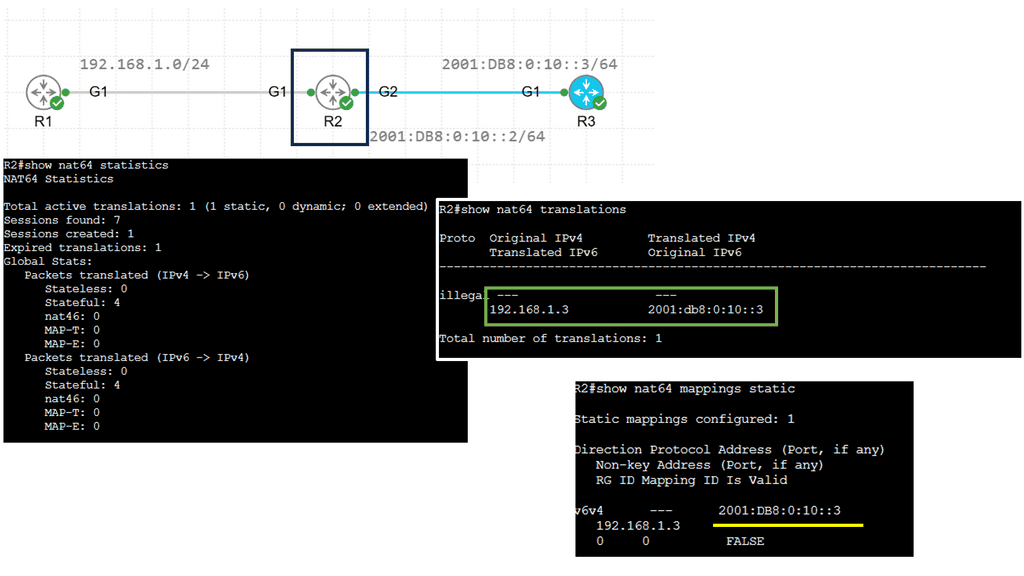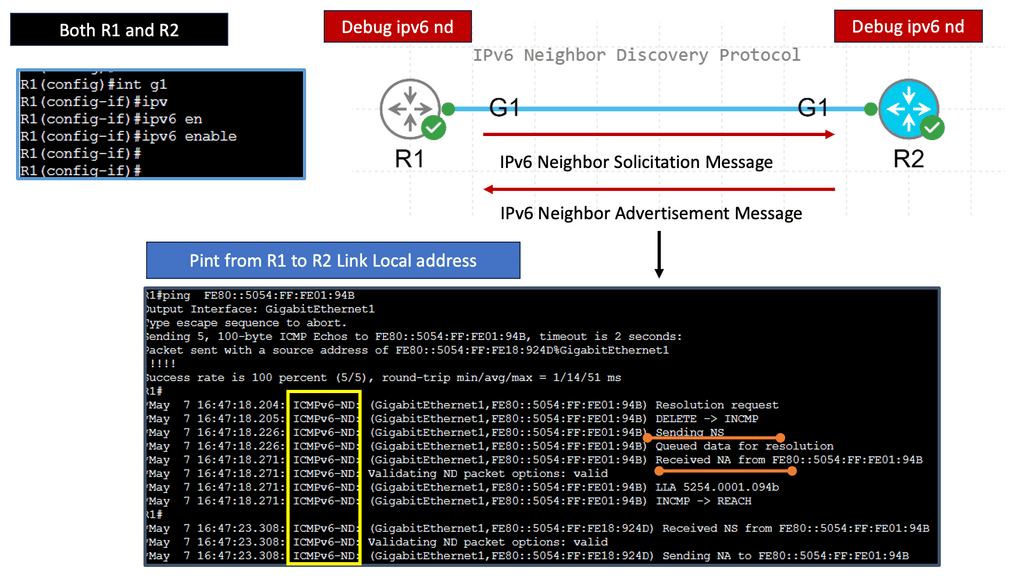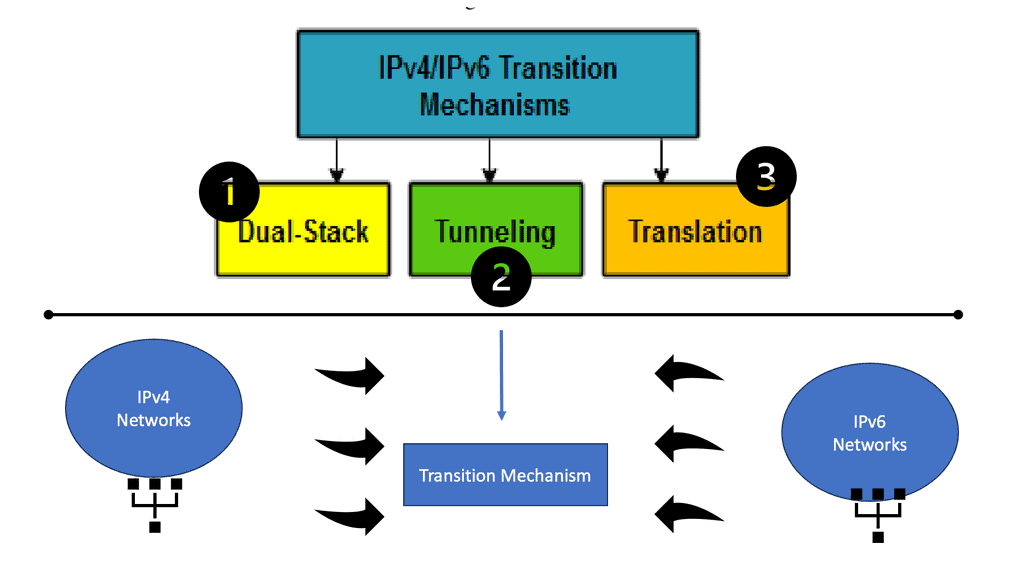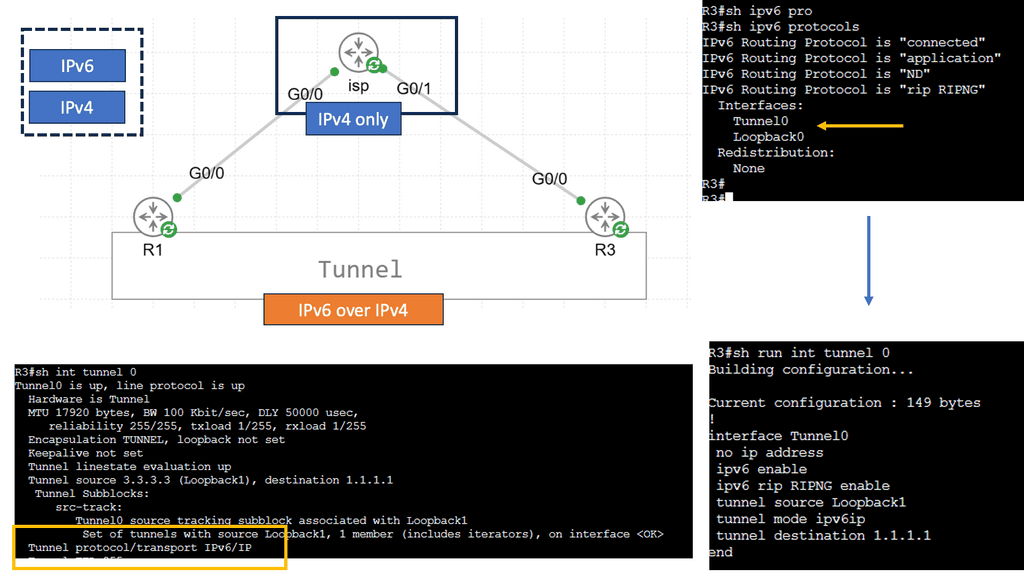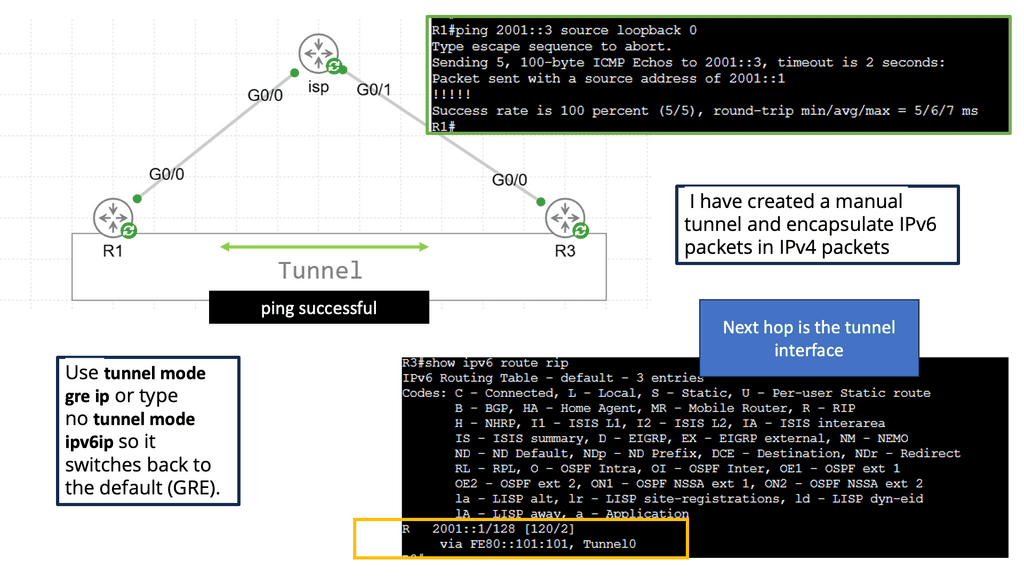SIIT IPv6
In the fast-paced world of technology, where innovation drives progress, the demand for seamless and efficient internet connectivity continues to grow. As the world transitions from IPv4 to IPv6, one technology that has gained significant attention is SIIT IPv6. In this blog post, we will delve into the concept of SIIT IPv6, its benefits, and its potential to shape the future of internet connectivity.
SIIT, which stands for Stateless IP/ICMP Translation for IPv6, is a mechanism designed to enable communication between IPv6 and IPv4 networks. It allows devices on an IPv6 network to communicate seamlessly with devices on an IPv4 network, eliminating the need for dual-stack configurations or complex translation mechanisms. SIIT bridges the two protocols, ensuring compatibility and facilitating a smooth transition to the next-generation internet protocol.
SIIT IPv6, also known as IPv6 Network Address and Protocol Translation, is a mechanism that facilitates the coexistence of IPv4 and IPv6 networks. It allows devices on different networks to communicate with each other effectively. Unlike conventional translation mechanisms, SIIT IPv6 is stateless, eliminating the need for storing complex translation tables.
One of the significant advantages of SIIT IPv6 is its ability to enable communication between IPv4 and IPv6 hosts without requiring any changes to the network infrastructure. This flexibility allows organizations to adopt IPv6 at their own pace, minimizing disruptions and reducing the complexity of the transition process. Furthermore, SIIT IPv6 provides transparent communication between the two protocols, ensuring compatibility and seamless integration.
Implementing SIIT IPv6 involves configuring the translation mechanism on suitable network devices. It requires setting up rules for address and protocol translation, enabling communication between IPv4 and IPv6 networks. While the process may vary depending on the network infrastructure, the fundamental principles of SIIT IPv6 deployment remain consistent across different scenarios.
Although SIIT IPv6 offers numerous benefits, it is essential to acknowledge the potential challenges that may arise during its implementation. Considerations such as address exhaustion, security vulnerabilities, and performance impact should be carefully evaluated. By understanding these challenges, organizations can effectively mitigate risks and navigate the transition process smoothly.
Conclusion: SIIT IPv6 serves as a crucial bridge between the old and new internet protocols, enabling seamless communication and integration. Its stateless nature, flexibility, and compatibility make it an essential component in the transition to IPv6. As organizations embrace the future of networking, understanding and adopting SIIT IPv6 is a vital step towards ensuring a smooth and efficient transition.Matt Conran
Highlights: SIIT IPv6
Functionality and Benefits of SIIT IPv6
IPv6, the sixth version of the Internet Protocol, is designed to replace IPv4 due to its finite address space. With its expanded capacity, IPv6 can accommodate the ever-growing number of internet-connected devices. However, the transition to IPv6 poses challenges, particularly in coexistence with IPv4 networks.
SIIT, the Stateless IP/ICMP Translation mechanism, facilitates the coexistence of IPv6 and IPv4 networks. It enables seamless communication between devices using different IP protocols. SIIT acts as a bridge, allowing IPv6-only devices to communicate with IPv4-only devices and vice versa.
SIIT IPv6 operates by encapsulating IPv4 packets within IPv6 packets, ensuring compatibility and smooth transmission. By providing transparent translation, SIIT eliminates the need for complex network upgrades and enables the gradual transition to IPv6. Its benefits include enhanced connectivity, simplified network management, and improved security through network address translation (NAT).
Stateless IP/ICMP Translation
The Stateless IP/ICMP Translation (SIIT) translates packet header formats between IPv6 and IPv4. The SIIT method defines a class of IPv6 addresses called IPv4-translated addresses. These addresses have the prefix::ffff:0:0:0/96 and can be written as::ffff:0:a.b.c.d, where a.b.c.d represents an IPv6-enabled node. Using this algorithm, IPv6 hosts without a permanently assigned IPv4 address can communicate with IPv4-only hosts that do not have a zero-valued checksum in their transport protocol header. The specification does not address address assignment and routing details. Essentially, SIIT is a stateless address translation technique.
Example: IPv6 Automatic 6to4 Tunneling
Understanding IPv6 Automatic 6to4 Tunneling
IPv6 Automatic 6to4 Tunneling is a mechanism that allows IPv6 packets to be transmitted over an IPv4 network infrastructure. It accomplishes this by encapsulating IPv6 packets within IPv4 packets. This process facilitates communication between IPv6-enabled hosts using an IPv4 network as an intermediary. By leveraging 6to4 Tunneling, organizations can gradually adopt IPv6 without completely overhauling their existing IPv4 infrastructure.
When an IPv6 packet is sent through an Automatic 6to4 Tunnel, it is encapsulated within an IPv4 packet with a specific protocol number. This encapsulated packet is transmitted across the IPv4 network until it reaches a 6to4 relay router. The 6to4 relay router decapsulates the IPv4 packet, retrieves the original IPv6 packet, and forwards it to its intended IPv6 destination. This seamless encapsulation and decapsulation process enables end-to-end communication between IPv6-enabled devices across an IPv4 infrastructure.
One critical advantage of Automatic 6to4 Tunneling is its ability to enable IPv6 connectivity without requiring extensive modifications to existing IPv4 networks. It allows organizations to leverage their current infrastructure while gradually transitioning to IPv6. Additionally, 6to4 Tunneling provides a cost-effective solution as it eliminates the need for immediate and widespread IPv6 infrastructure upgrades.
Example: NPTv6 Network Prefix Translation
Understanding NPTv6
NPTv6, also known as Network Prefix Translation for IPv6, is a revolutionary network protocol that aims to address the challenges associated with IPv4 exhaustion. By providing a seamless transition from IPv4 to IPv6, NPTv6 enables the coexistence of both protocols within a network environment. This ensures interoperability and smooth communication between devices, networks, and applications.
One of NPTv6’s notable features is its ability to perform prefix translation. This allows for translating IPv6 prefixes into IPv4 addresses, ensuring compatibility between network segments. Additionally, NPTv6 provides enhanced scalability, eliminating the need for complex address conservation techniques commonly used in IPv4. This results in improved network performance and streamlined operations.
Deployment Considerations
When considering the deployment of NPTv6, organizations must carefully plan their network architecture and address allocation strategies. They must also assess the compatibility of existing hardware and software with NPTv6 and ensure proper configuration of network devices. Additionally, implementing security measures such as stateful packet inspection and access control lists is crucial to safeguarding the network against potential vulnerabilities.
Numerous organizations have already embraced NPTv6 and reaped its benefits. For instance, Company X, a leading telecommunications provider, successfully implemented NPTv6 to optimize their network infrastructure. They experienced improved network performance, simplified address management, and seamless IPv4 and IPv6 services integration. Similarly, Organization Y, a multinational corporation, leveraged NPTv6 to overcome IPv4 address exhaustion challenges and enable smooth communication across their global network.
Example Technology: NAT64
Understanding NAT
NAT, or network address translation, serves as a bridge between private and public networks. It allows multiple devices within a private network to share a single public IP address. By translating private IP addresses into a single public IP address, NAT enables communication between devices in the private network and the vastness of the internet.
As the depletion of IPv4 addresses continues, the transition to IPv6 becomes more crucial. However, the coexistence of IPv4 and IPv6 poses challenges in communication between devices using different IP versions. This is where NAT64 comes into play. NAT64 is a translator between IPv4 and IPv6, facilitating communication and ensuring a smooth transition from IPv4 to IPv6.
NAT64 works by mapping IPv6 addresses to IPv4 addresses and vice versa. When an IPv6-only device communicates with an IPv4-only device, NAT64 intercepts the communication and performs address translation. It allows IPv6 packets to be sent over an IPv4 network and vice versa, bridging the gap between the two IP versions.
NAT64 offers several benefits in networking. First, it enables seamless communication between IPv4-only and IPv6-only devices, ensuring compatibility and connectivity. Second, NAT64 aids in the gradual transition from IPv4 to IPv6 by allowing IPv6-enabled devices to communicate with the vast majority of IPv4 devices that still exist. This facilitates a smooth migration process without disrupting existing networks.
Recap: IPv6 Connectivity
Understanding Neighbor Discovery Protocol
The Neighbor Discovery Protocol (NDP) is a fundamental component of IPv6, designed to replace the Address Resolution Protocol (ARP) used in IPv4 networks. It serves multiple purposes, including address resolution, duplicate address detection, router discovery, and parameter discovery. By efficiently managing neighbor relationships, NDP enhances the overall efficiency and reliability of IPv6 networks.
Address Resolution and Duplicate Address Detection
A key feature of NDP is its ability to perform address resolution, which maps IPv6 addresses to their corresponding link-layer addresses. Through the Neighbor Solicitation and Neighbor Advertisement messages, devices can dynamically discover and maintain this mapping, ensuring seamless communication within the network. Additionally, NDP incorporates duplicate address detection mechanisms to prevent conflicts and maintain address uniqueness.
Router Discovery and Autoconfiguration
Another vital aspect of NDP is its support for router discovery. By exchanging Router Solicitation and Router Advertisement messages, hosts can identify and learn about the presence of routers on the network. This information enables efficient routing and enables hosts to configure their IPv6 addresses automatically using Stateless Address Autoconfiguration (SLAAC) or obtain additional configuration parameters through the Router Advertisement messages.
While NDP offers numerous benefits, it is essential to address potential security concerns. Attackers can exploit vulnerabilities within NDP to launch various attacks, such as Neighbor Discovery Protocol Spoofing or Neighbor Cache Poisoning. Implementing appropriate security measures, such as Secure Neighbor Discovery (SEND), can mitigate these risks and ensure the integrity and authenticity of NDP messages.
Transition Technologies
IPv6 and IPv4 will coexist for many years, and a wide range of techniques make coexistence possible and provide an easy transition. Making the right choices and finding the best migration path is essential. There is not an easy one-size-fits-all strategy. The migration path has to be adjusted to the individual requirements of each organization and network.
The available techniques that support you in your transition are separated into three main categories:
- Dual-stack techniques
- Allow IPv4 and IPv6 to coexist in the same devices and networks
- Tunneling techniques
- Allow the transport of IPv6 traffic over the existing IPv4 infrastructure translation techniques
- Allow IPv6-only nodes to communicate with IPv4-only nodes
These techniques can and likely will be used in combination. The migration to IPv6 can be done step-by-step, starting with single hosts or subnets. You can migrate your corporate network or parts of it while your ISP still runs only IPv4, or your ISP can upgrade to IPv6 while your corporate network still runs IPv4.
Understanding IPv6 Tunneling
IPv6 tunneling is a technique for transmitting IPv6 packets over an IPv4 network. It enables communication between IPv6-enabled devices across networks that primarily support IPv4. By encapsulating IPv6 packets within IPv4 packets, tunneling ensures seamless connectivity in the transition to IPv6.
Types of IPv6 Tunneling
There are various types of IPv6 tunneling, each serving different purposes. Let’s explore a few prominent ones:
Manual Tunneling: Manual tunneling involves configuring tunnels between two endpoints, typically routers. This method requires the manual configuration of tunnel endpoints, tunnel interfaces, and routing protocols. While it offers flexibility, managing in larger networks can be labor-intensive and challenging.
Automatic tunneling, on the other hand, allows for dynamic creation of tunnels without manual configuration. It utilizes IPv4-compatible or IPv4-mapped IPv6 addresses to encapsulate and transmit IPv6 packets over an IPv4 network. Automatic tunneling simplifies the configuration process but may not be suitable for all network scenarios.
IPv4 to IPv6 Translation
Legacy applications are continuing to stall IPv6 global deployment. Some applications will never be ready for IPv6 (for example, the SNA application in COBOL), but as long as you have not hard-coded an IPv4 address in the application code, many applications and services can and will be IPv6 ready using an IPv4 to IPv6 translation method, such as SIIT IPv6.
Numerous IPv4 to IPv6 translation methods exist, all of which introduce complexity and network state and eventually lose the visibility of end clients with the potential to cause IPv6 fragmentation. These are compounded by the issues of NAT46, which we will discuss in just a moment. Let us look at one IPv4 to IPv6 translation method enabling a type of IPv6 high availability.
For additional pre-information, you may find the following helpful.
SIIT IPv6 Key IPv6 SITT Discussion Points: |
|
SIIT and protocol translation. Back to basics.
SITT (Stateless Internet Protocol/Internet Control Messaging Protocol Translation), referenced as RFC2765, is an IPv6 transition mechanism. SITT enables IPv6-only hosts to communicate with IPv4-only hosts. The translation mechanism involves a stateless mapping or bi-directional translation algorithm between IPv4 and IPv6 packet headers and between Internet Control Messaging Protocol version 4 (ICMPv4) and ICMPv6 messages. There are two common ways to design this. First, the translation process can be performed directly in the end system or a network-based device.
Benefits of SIIT IPv6:
1. Simplified Network Architecture:
SIIT IPv6 simplifies network architecture by eliminating the need for complex translation mechanisms. It allows organizations to consolidate networks by seamlessly connecting IPv6 networks with existing IPv4 infrastructure. This simplification reduces operational costs and enhances overall network efficiency.
2. Seamless Transition:
One of SIIT IPv6’s key advantages is its ability to facilitate a seamless transition from IPv4 to IPv6. It ensures that devices on both IPv4 and IPv6 networks can communicate with each other without any disruptions or compatibility issues. This smooth transition process is crucial in avoiding service interruptions and enabling a gradual migration to the new protocol.
3. Enhanced Security:
SIIT IPv6 provides enhanced security features compared to traditional IPv4 networks. By leveraging the security enhancements offered by IPv6, such as IPsec, SIIT helps protect data transmitted between IPv4 and IPv6 networks. This added layer of security ensures the confidentiality, integrity, and availability of information, safeguarding organizations from potential cyber threats.
4. Scalability:
As the demand for internet connectivity continues to grow exponentially, scalability becomes a critical factor. SIIT IPv6 offers a scalable solution, allowing organizations to accommodate the increasing number of devices and users on their network. With the abundance of IPv6 addresses, SIIT ensures that scalability is not a limiting factor in the future growth of internet connectivity.
Example: IPv4 to IPv6 translation method
Alexa, a subsidiary of Amazon.com, provides commercial web traffic data and states most content now runs over IPv6. However, IPv6-only mobile devices are still lagging due to Skype and other legacy applications running only over IPv4. The introduction of 464XLAT enables IPv4-Ipv6-IPv4 translations, allowing legacy applications to work over IPv6. A better solution is to design against RFC 6052 Stateless IP/ICMP translation; stateless IPv6-to-IPv4 translation technology.
- A quick recap: Types of NAT
The following list of some different forms of NAT:
Translation Method | Translation Details |
NAT44 | NAT from IPv4 to IPv4: This is the most popular |
NAT66 | NAT from IPv6 to IPv6 |
NAT46 | NAT from IPv4 to IPv6 |
NAT64 | NAT from IPv6 to IPv4 |
Highlighting SIIT IPv6
As stated previously, IPv4 and IPv6 will coexist for the foreseeable future. Therefore, how and when an organization migrates to IPv6 will depend on its specific situation. The SIIT (Stateless IP/ICMP Translation) algorithm translates between the IPv4 and IPv6 packet headers, including ICMP headers. Now, we have a network deployment model to allow legacy IPv4-only networks to establish connections to and from IPv6-only networks, in other words, to allow connections between single-stack IPv4-only and IPv6-only networks.
SIIT is helpful for:
- For deploying IPv6-only data centers.
- A solution to public IPv4 address exhaustion.
- To simplify or even avoid deploying dual-stack scenarios, consider a single-stack approach.
NAT Performance Problems
The problem with IPv4 communication to IPv6 content is transit path NAT boxes. Service Providers lose control of users’ experience. Deployment usually starts with NAT, as it’s the most straightforward approach. Carrier-grade NAT ( GCN ) is expensive and should be avoided. NAT always breaks things. It limits the number of connections per client, breaks IPv4 URL literal, and causes peer-to-peer applications to have problems with NAT.
- Example VoIP
NAT traversal, which is getting packets in and out of your NAT device, will significantly impact VoIP security, so you need to know the issues and how to protect your network. Customers will move to a content provider that works if the content breaks.
Problem with keeping state in networks
With NAT, an ample IPv6 address space gets mapped into a small IPv4 address space, which is done statefully. Keeping state in the network is terrible and hits performance. Devices that have to track all states and flows that cross their interfaces are susceptible to performance problems. The stateful device requires traffic to follow correct paths, and flows must traverse the same proxy device.
The stateful device does not support asymmetric routing.
If one device fails and no stateful failover is configured, all sessions break and must be re-established. We lose visibility of the IPv6 client’s source IP address. End-to-end source visibility is required for geographical traffic routing ( geolocation load balancing ), logging, etc. Also, IPv4-only web servers in the data center will only see the inside IPv4 address of the NAT46 device.
Using SIIT for Stateless NAT46
Stateless IP/ICMP Translation ( SIIT ) RFC 6052 translates between IPv6 and IPv4 packet headers without any network state or loss of the original clients’ IP address. It is enabling IPv4 clients to connect to IPv6-only data centers. When the translating device receives an IPv4 datagram addressed to a destination towards the IPv6 domain, it translates the IPv4 header of the packet into an IPv6 header. The data portion of the packet is left unchanged.
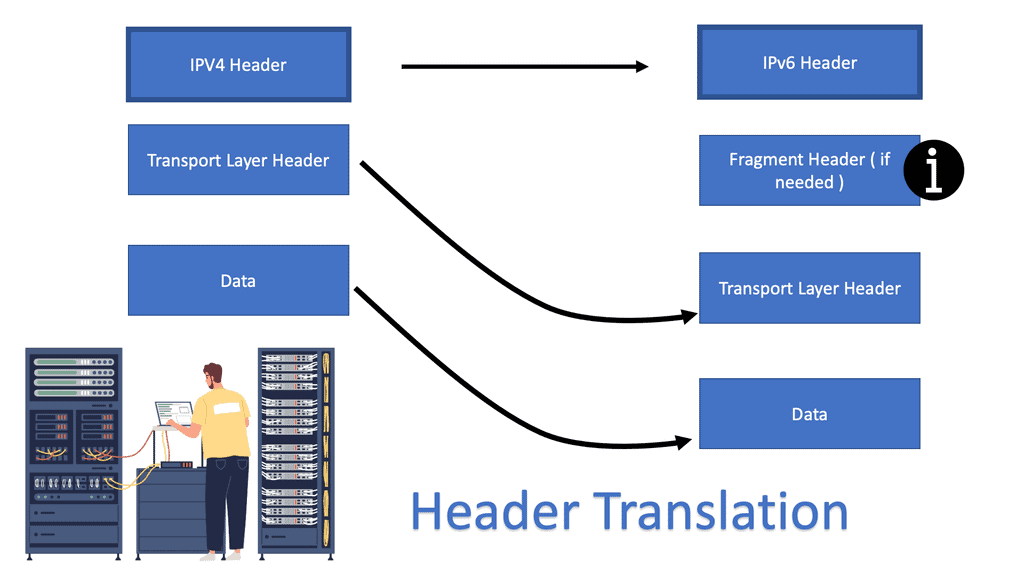
SIIT mapping system
SIIT allows IPv4 clients to connect to IPv6-only content via the SIIT mapping system. It does not keep state or change/play with port numbers. Solves the problem of content providers running out of IPv4 but not for clients running out of IPv4. Clients still connect via traditional IPv4 methods.
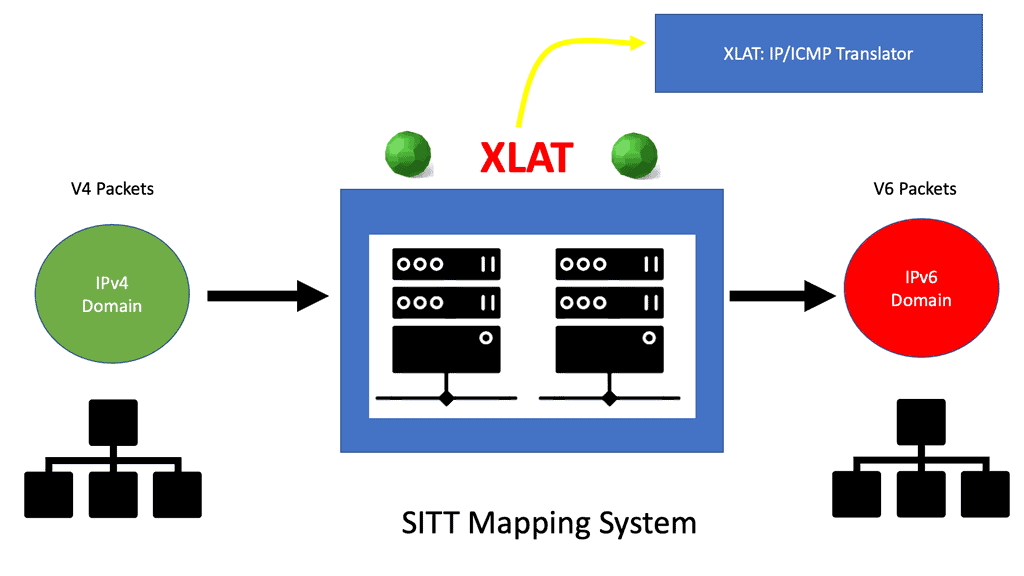
SIIT maps 32 bits of the IPv4 address space into a /96 IPv6 prefix. I am totaling 128 bits. The prefix 64:FF9B::/96 is assigned by RFC 6052 for algorithmic mapping between address families. However, it is not globally routable. For flexibility, I would recommend assigning your own global /96 address. Hosting companies could then offer translation as a service. Every possible IPv4 address has a one-to-one mapping with an IPv6 address.
IPv6 is configured only on the back-end systems (single stack IPv6), and mapping between IPv4-Mapped IPv6 is a core network function. All the tables are held on SIIT boxes, not on the servers, so the network team takes care of the complexity.
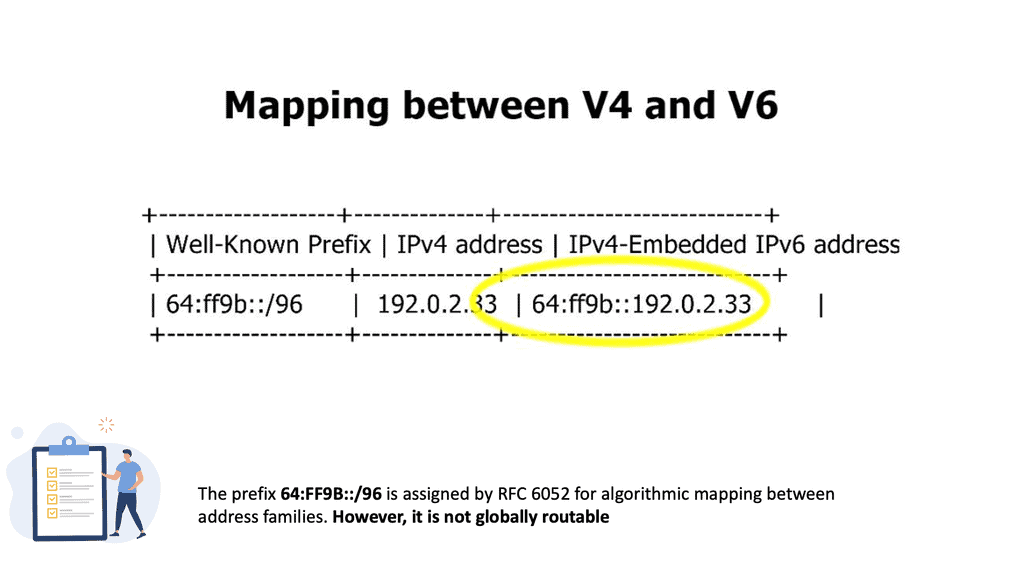
Native external IPv6 typically connects to IPv6 servers; external IPv4 connects to IPv6 content through the SIIT mapping system.
The SIIT operation
The external user connects via traditional IPv4 mechanisms. Users perform DNS lookups for IPv4 addresses and send TCP SYN or HTTP GET to the destination address. SIIT device examines the destination of the received packet and determines if it has a static mapping for the matched IPv4 address. SIIT gateway will translate the address to whatever static mapping you have set. The destination web server sees the packet as a regular IPv6 address. With a bit of PHP scripting code on the server, you can extract the client’s original IPv4 address. The source address may be used for geographical routing, logging, etc.
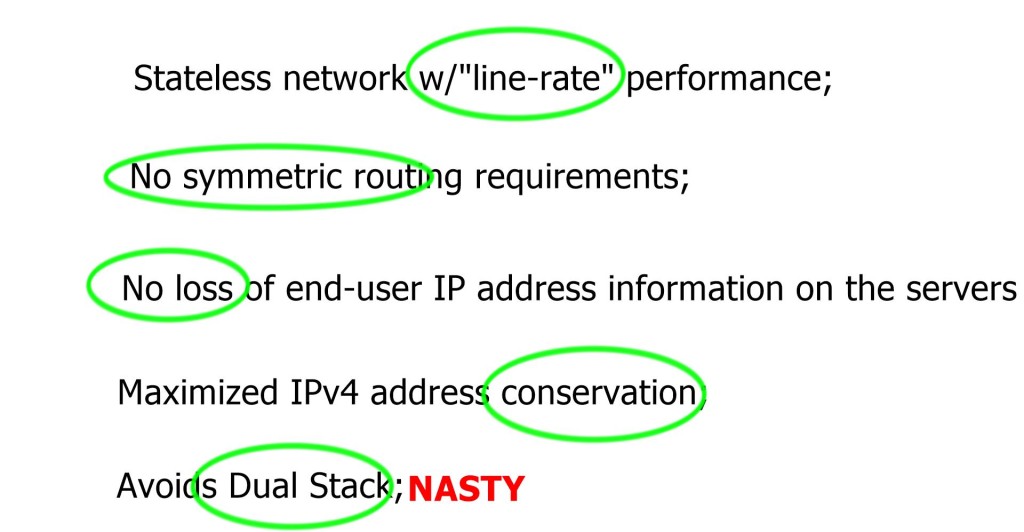
The server and client are unaware of what is happening. The TCP and HTTP payload is end-to-end—there is no TCP or UDP port translation. The single element of TCP that gets touched is the TCP checksum. Port numbers and payload do not change. If an IPv6 server needs to reach IPv4 content on v4 Internet (for example, an update service ), deploy NAT64 or HTTP proxy that uses a dual stack outside and inside the IP address.
HTTP proxy handles IPv4 and IPv6 HTTP content, serving IPv6 and IPv4 client connections. Most people use HTTP, but if someone wants to use multicast or another specialist service, they can be put on IPv4 and operated under regular V4 terms.
Key Points | SITT IPv6 |
IPv4 to IPv6 translation | Works with SSL because stateless NAT46 does not touch the TCP layer |
IPv4 to IPv6 translation | Does not require HTTP header insertion (like X-Forwarded-For) |
IPv4 to IPv6 translation | Ability to extract the source-IPv4 address of the client from the IPv6 server |
SIIT IPv6 presents an innovative and practical solution for enabling seamless communication between IPv6 and IPv4 networks. Its ability to simplify network architecture, facilitate a smooth transition, enhance security, and provide scalability makes it a crucial technology in the evolving landscape of internet connectivity. As organizations embrace the benefits of SIIT IPv6, they can unlock new possibilities and ensure a seamless experience for their users in the ever-expanding digital world.
Summary: SIIT IPv6
In today’s technologically advanced world, where connectivity is the key, the transition to IPv6 has become essential. In this blog post, we delved into the fascinating realm of SIIT IPv6, its benefits, and how it revolutionizes how we connect.
Understanding SIIT IPv6
SIIT IPv6, which stands for Stateless IP/ICMP Translation for IPv6, is a mechanism that allows seamless communication between IPv6 and IPv4 networks. It solves the interoperability challenge between the two protocols, ensuring a smooth transition towards the future of networking.
Benefits of SIIT IPv6
There are numerous advantages to implementing SIIT IPv6. Firstly, it eliminates the need for complex dual-stack configurations, reducing network complexity and management overhead. It also enables transparent communication between IPv6 and IPv4 hosts, allowing them to interact seamlessly without manual intervention. Moreover, SIIT IPv6 promotes a gradual migration to IPv6 by facilitating the coexistence of both protocols, ensuring a smooth transition without disrupting existing services.
Implementation and Deployment
Implementing SIIT IPv6 requires careful planning and configuration. Network administrators need to set up SIIT gateways and ensure proper address translation between IPv6 and IPv4 networks. By following established best practices and guidelines, organizations can successfully deploy SIIT IPv6 and reap its numerous benefits.
Challenges and Considerations
While SIIT IPv6 offers significant advantages, being aware of potential challenges is essential. Network security is a crucial aspect to consider, as the translation process may introduce vulnerabilities. Robust security measures, such as firewalls and intrusion detection systems, should be implemented to mitigate any potential risks. Additionally, compatibility issues with certain applications or protocols may arise, requiring careful testing and validation during deployment.
Conclusion:
In conclusion, SIIT IPv6 is a remarkable solution that bridges the gap between IPv6 and IPv4 networks, ensuring a seamless transition towards the future of networking. Its benefits, including simplified network management, transparent communication, and gradual migration, make it an invaluable tool for organizations embracing the digital age. By understanding its implementation, considering potential challenges, and taking necessary precautions, businesses can harness the power of SIIT IPv6 and unlock new possibilities for connectivity and innovation.

